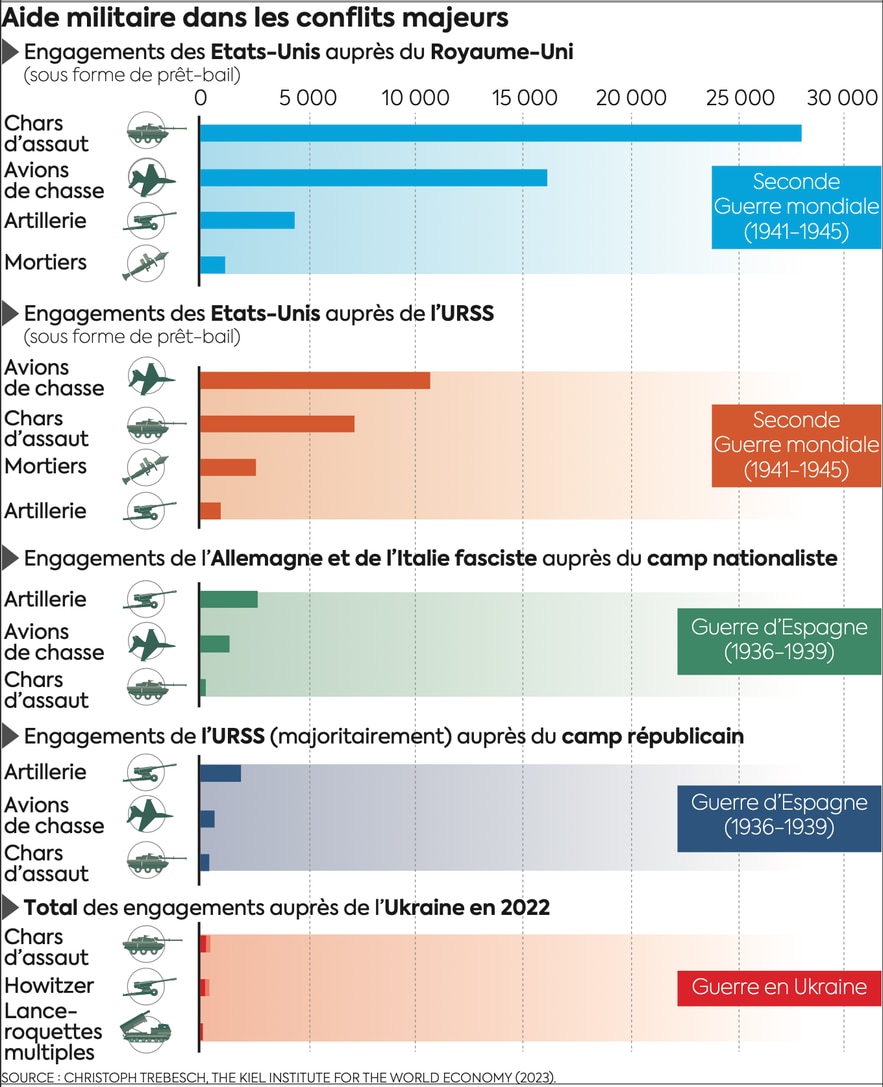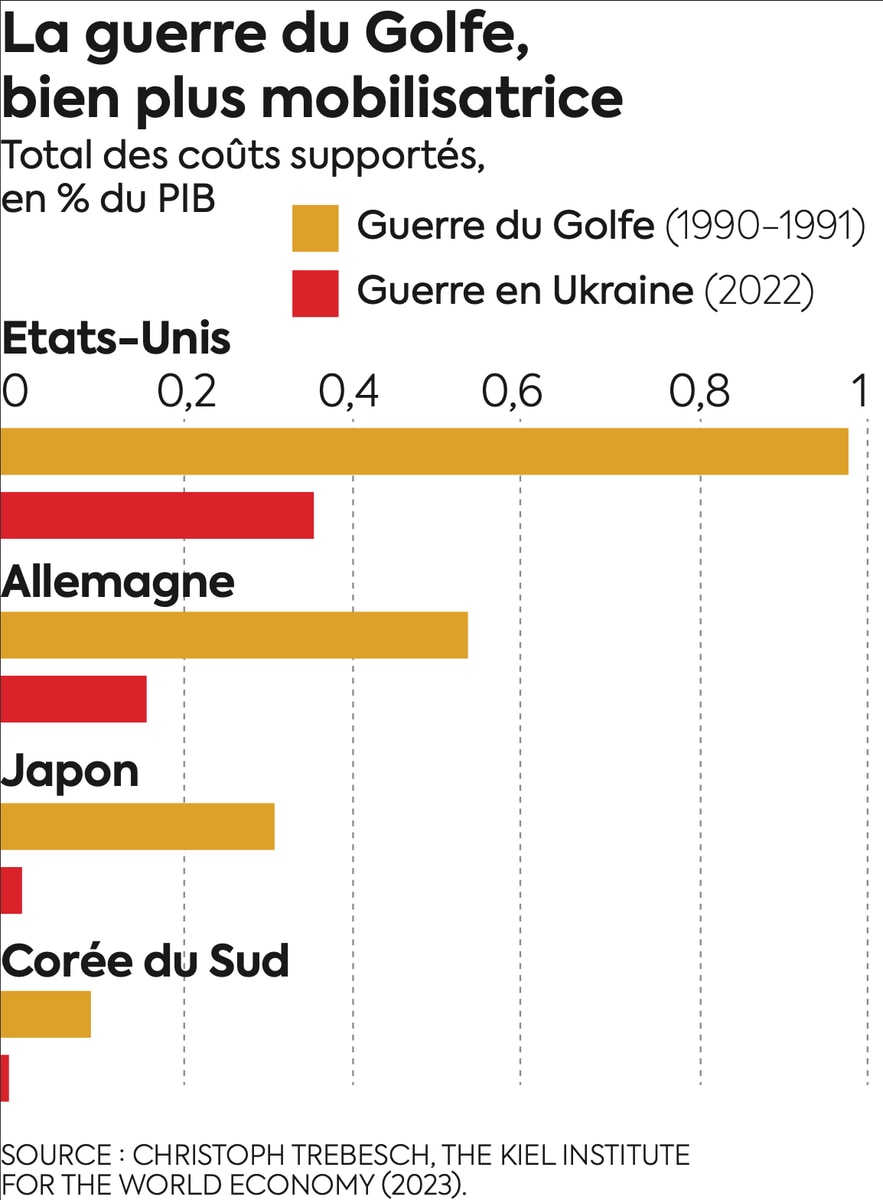Without a start, the fight is lost in advance. Ahead of the NATO summit on July 11 and 12 in Vilnius (Lithuania), Volodymyr Zelensky and his army chief of staff, Valeri Zaloujny, hammered it day and night in the Western press, hoping convince their partners to step up the pace. At stake is the reconquest of Ukrainian territory occupied by the Russian army. Faced with the fortifications built by the enemy, the counter-offensive stalled. “In some directions, we can’t even think of starting it, because we don’t have the necessary weapons. And sacrificing our people to be killed by Russian long-range weapons would be simply inhumane,” lamented President Zelensky in an interview with the American channel CNN on July 5. This Tuesday, Emmanuel Macron announced that France would deliver long-range “Scalp” missiles to Ukraine, while Germany will deliver nearly 700 million euros in additional weapons.
Ukraine’s No. 1 ally since the large-scale invasion began on February 24, 2022, the United States has provided support worth €70.7 billion (as of January 15, 2023), of which some €43 billion euros in military aid. Important as this commitment is, it is still far from the annual military expenditure incurred by the United States in other wars during the 20th century. In a study published on the Vox Ukraine website, researcher Christoph Trebesch of the Kiel Institute for the World Economy (Germany) shows that “international aid to Ukraine so far is surprisingly low” compared to previous conflicts. The main supporters of Ukraine are scrutinized through the history of seven other wars: the Second World War, the Spanish Civil War, the Korean War, Vietnam, Afghanistan, Iraq and the Gulf War.
The study is based in particular on data from the Kiel Institute of the World Economy, which lists the support of 40 donor governments and that of European institutions. The latest figures relate to the period from January 24, 2022 (date on which several NATO states put their troops on alert) and January 15, 2023.
“By far the costliest war, in terms of annual U.S. military expenditure relative to GDP, was that of Korea (1950-53) observes the researcher […] These expenditures were more than ten times the amount incurred in Ukraine in 2022 (0.21%).”
American support through the wars
© / Cartography legends
Christoph Trebesch also compares the arms deliveries in detail, while admitting that the price and the degree of technological sophistication of the material has “increased considerably”.
One reality remains: “The difference in the scale of arms delivered is drastic. USSR and France also received thousands of heavy weapons under the US Lend-Lease program.Compared to this, the total number of heavy weapons destined for Ukraine is only a fraction – less than 500 tanks and howitzers, and less than 100 multiple rocket launchers.”

Military aid in major conflicts
© / Legends Cartography
The study makes the same observation about the Gulf War (1990-1991), which has the particularity of presenting points in common with the Ukrainian case.
“In both wars, a much larger neighboring state [l’Irak] launched an unprovoked invasion [du Koweït] and, in the two wars, the Western countries formed an alliance to repel the aggressor state” notes Christoph Trebesch. With one difference, and not the least: in Ukraine, the “Western coalition” does not intervene directly on the ground.

The Gulf War, much more mobilizing
© / Legends Cartography
After 500 days of a war of attrition, the means of the Ukrainian army seem insufficient to reconquer, even slowly, their territory.
Many experts are calling for speeding up deliveries and sending more powerful equipment, such as F-16 fighter jets. “The Ukrainians need the ATACMS, these missiles with a range of 300 kilometers that the Americans are still thinking about giving them”, explains in an interview with The Express General (2S) Michel Yakovleff, former Vice-Chief of Staff of Shape, the Supreme Allied Command for NATO operations. “They would make it possible to strike deep into the depths of the Russians and could, therefore, considerably complicate their lives, he specifies. Thanks to these missiles, the Ukrainians would be able to threaten, with great precision, many objectives: including the Kerch Bridge, which connects Russia to Crimea and is a major logistical axis. Overall, the entire Russian presence in Ukraine would be under threat from Ukrainian fire.”
